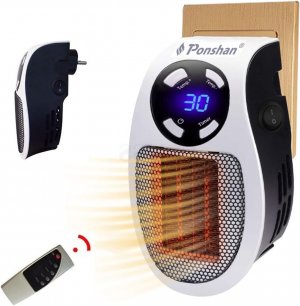Rootsruler
Know it all
- Joined
- Apr 14, 2023
- Messages
- 3,418
- Reaction score
- 15,273
So I've been working on keeping lights off temps at or above my lights on temps to reduce node spacing in flower, thanks @tobh. To do this I bought a small heater with thermostat to control the setpoints I'm going after. I tested it in the tent last night and it has worked beautifully. Kept temp topped off at lights out. It also has a timer so I can schedule it to turn off on lights on, so that I don't add more heat to what the lights are producing, and turn back on once lights go out. It has a remote so I didn't have to go into the tent to readjust.
If anyone else is trying to do the same I'd like to recommend the heater I bought. Mind you, I can't speak to its reliability as I just ran it last night but if it doesn't break it's a good way of doing this cheaply. I'm in a 5 x 5 tent. If you're in a larger tent you may want to position a couple in your tent. Also, most heaters have an internal tilt over/off switch for safety. This heater can be positioned in any way and will work so be careful where you place it and how you secure it.
I'd caution anyone doing this to seriously consider adding a smoke alarm inside the tent in case something goes wrong. I added one to my tent and feel much better in regards to fire hazards that can occur. Still working on an auto extinguisher for when I'm away.
Smoke Alarm w/ pole mounts

Mounted

Heater I used

If anyone else is trying to do the same I'd like to recommend the heater I bought. Mind you, I can't speak to its reliability as I just ran it last night but if it doesn't break it's a good way of doing this cheaply. I'm in a 5 x 5 tent. If you're in a larger tent you may want to position a couple in your tent. Also, most heaters have an internal tilt over/off switch for safety. This heater can be positioned in any way and will work so be careful where you place it and how you secure it.
I'd caution anyone doing this to seriously consider adding a smoke alarm inside the tent in case something goes wrong. I added one to my tent and feel much better in regards to fire hazards that can occur. Still working on an auto extinguisher for when I'm away.
Smoke Alarm w/ pole mounts

Mounted

Heater I used






